How to make my home warmer
How can I make my home warmer?
The United Kingdom is currently grappling with a complex issue when it comes to ensuring that its homes remain warm and comfortable. Several elements have coalesced to compound this challenge, including soaring energy expenses, an expanding housing crisis, and the necessity to shift toward more eco-conscious and cleaner heating options. This convergence of factors has left numerous UK residents struggling to economically and effectively heat their homes, prompting concerns about the welfare of the nation's households.
If you are looking to increase the comfort of your home, make your home warmer without heating, or heat your home more cost effectively then you have most likely though about your home’s insulation. You might have explored options like insulating your roof, improving your boiler's efficiency, insulating your walls, or even upgrading to double-glazed windows. Yet, one often-overlooked aspect is insulating under the floors.
While the majority of heat loss occurs through an uninsulated or poorly insulated roof, did you know that an additional 20% of heat loss happens due to uninsulated floors? Suspended wooden floors, in particular, are a good example, as this type of construction uses an outdated ventilation system, letting in cold air, dust and moisture from the void below, which creates uncomfortable draughts, uneven temperatures, and can contribute to damp and mould.
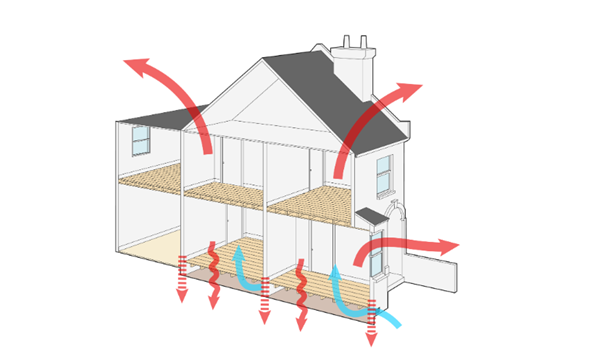
The void between the floor and ground is humid and cold. When the floor is uninsulated the temperature and height variations across a property create a pressure difference that drives air movement from the floor through the house, causing heat loss. The air movement from the floor void create draughts bringing cold, moist air from the void into the property.
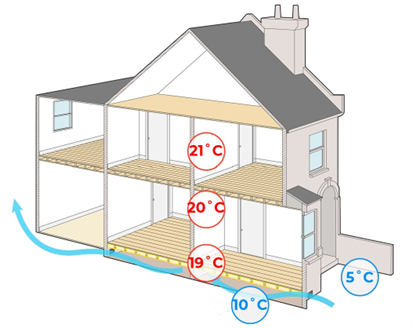
Once Q-Bot have installed spray foam insulation, it improves the thermal performance by 77% and reduces cold draughts by a third for the entire house, resulting in an average EPC improvement of 5 SAP points across the board. This means greater energy efficiency by lowering the amount of energy required to heat your home, as well as reducing your energy bills and carbon footprint. These benefits are based on a study of 180 homes, you can read the full case study here.
Benefits
The graphs below highlight how Q-Bot’s underfloor-insulation method compares to other insulation types you could get for your home.
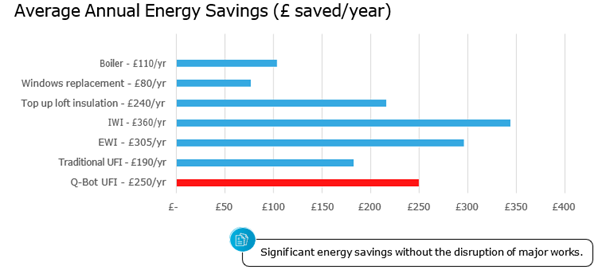
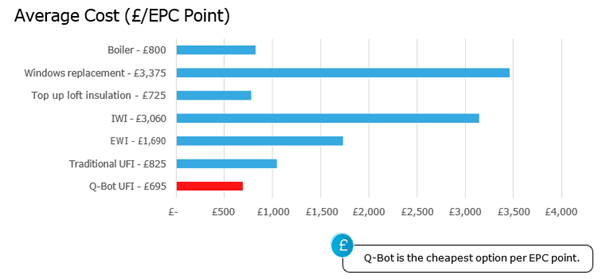
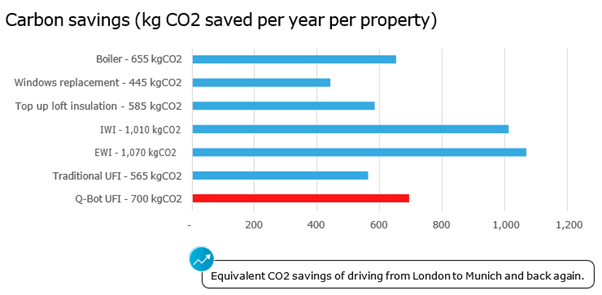
Besides making your home more comfortable, quieter, and energy-efficient, Q-Bot insulation also offers a long-term solution that will pay for itself in just 8-15 years purely based on energy savings. This is far better than replacing your windows or boiler, or even installing other types of underfloor insulation.
To find out if your home is eligible for Q-Bot insulation and how much it is estimated to cost, click here.
If you want to learn more about Q-Bot’s underfloor insulation, follow the link to our website to learn more.
